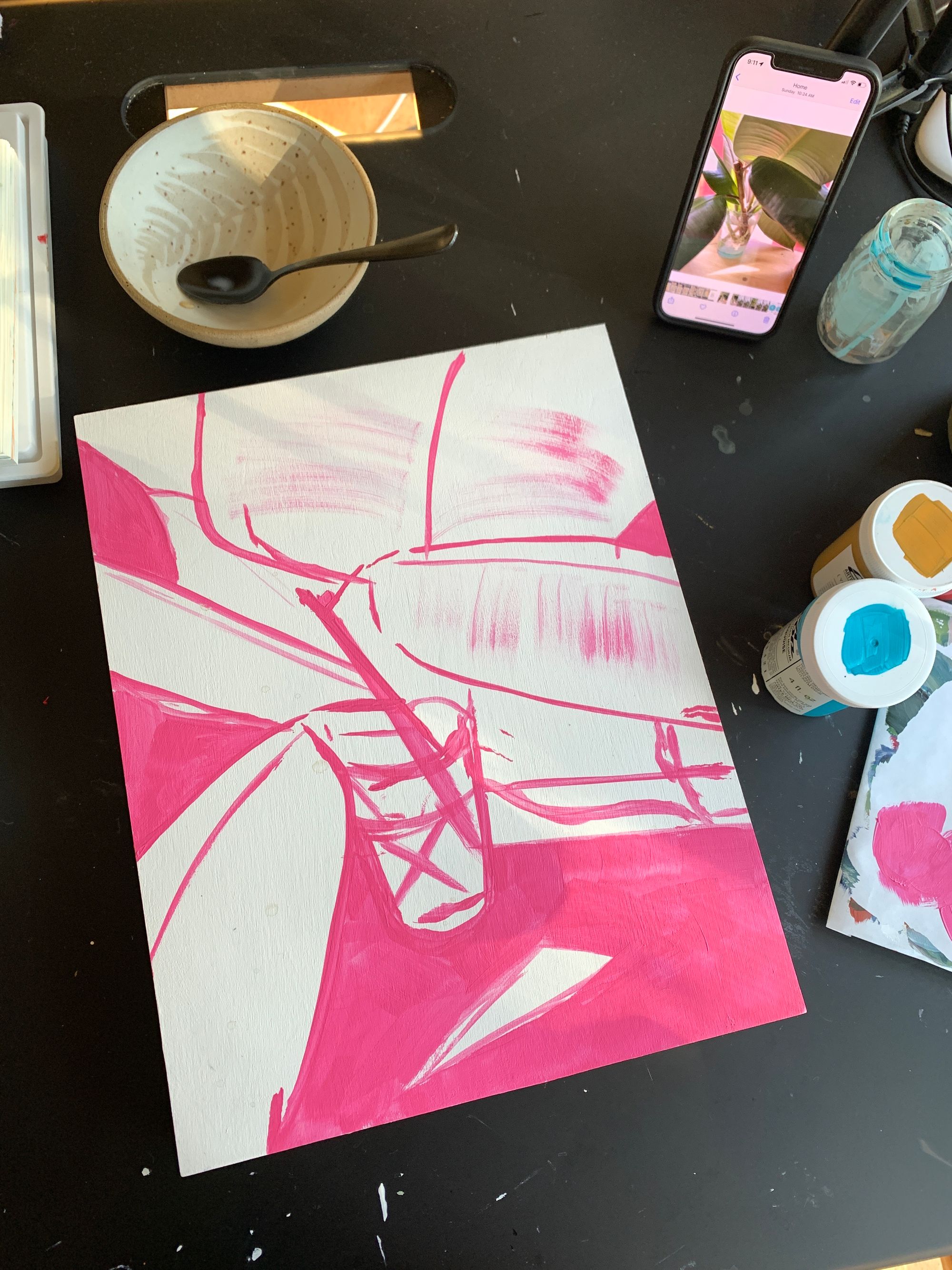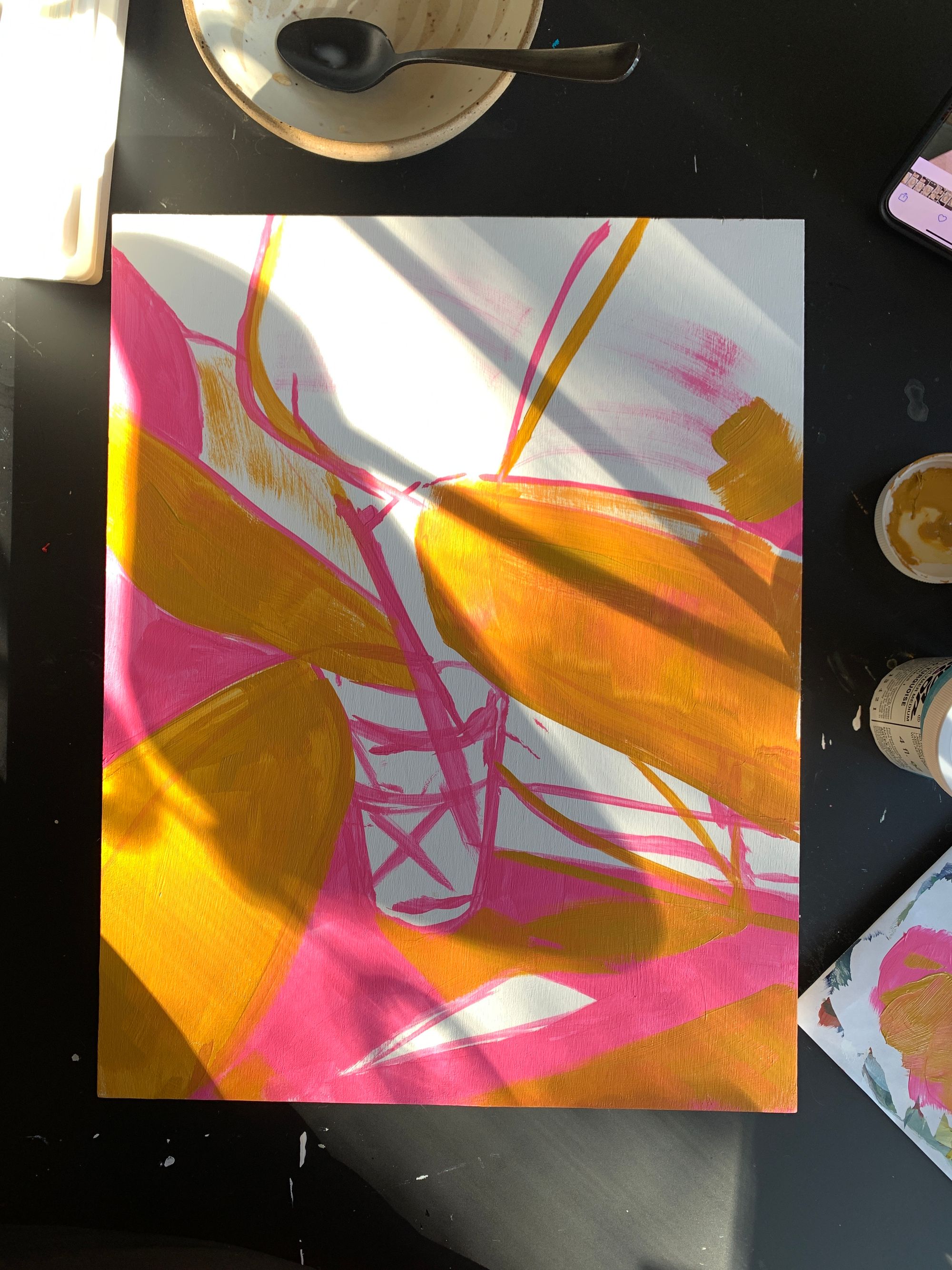Acrylic Paints: A beginning

Somehow we've made it all the way to May without me writing about acrylics, which is amazing since I love them and use them so much.

What are acrylics?
Acrylics are super versatile – they come in many consistencies, and can mimic the other types of paints (oil, watercolor, gouache) as well as having a look all their own.
Reasons that someone might use acrylic instead of another kind of paint has to do with its unique qualities. One, acrylic paint dries as a plastic layer, so once it dries it stays put and does not smudge or reactivate like watercolor and gouache would. As long as the paint isn't watered down too much, that plastic film that the paint dries into is - like all plastic - here for the long haul. Even though acrylic paints haven't been around for hundreds of years (artists began using them in the 1950s), lab tests against the effects of light, air, friction, etc., show that acrylic is likely to last longer than oil without yellowing or cracking. Acrylic paint is fast drying, way faster than oils at least, so it allows you to go in layer after layer all in one painting session instead of having to come back over days and weeks+. And the student versions at least can be quite affordable. Acrylic paints are used for all sorts of paintings on paper, canvas and panel, and they're also used for the big stuff like murals. Latex house paint is a type of acrylic paint too.


